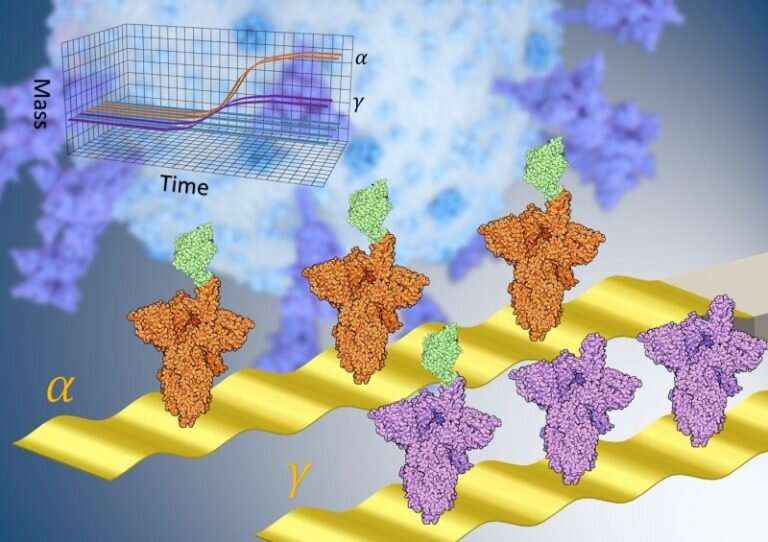New testing strategy rapidly quantifies transmissibility of COVID-19 variants

A team of researchers has developed a new nanomechanical technique for fast, one-step, immune-affinity tests, which can quantify the immune response induced by different COVID-19 variants in serum.
Their technique provides a new tool for tracking infection immunity over time and for analyzing new vaccine candidates.
Led by Professor Martin Hegner, Principal Investigator in the Trinity Centre for Research on Adaptive Nanostructures and Nanodevices (CRANN) and Trinity's School of Physics, the team's specific quantitative assay enables direct classification of variant-binding properties for screening emerging variants.
The major advantage of the newly developed technique with respect to (existing, commonly used) ELISA tests is that while it is equally sensitive—with added single amino-acid resolution—and able to directly detect multiple variants by in situ differential analysis, it can also do so in a mere fraction of the time.
Professor Hegner and his co-workers focused on COVID-19 variants of concern and their generated humoral immune response. Humoral immunity is an antibody-mediated response that occurs when foreign material is detected in the body. Given that the COVID-19 virus has developed substantial mutations in the spike protein this can undermine the efficacy of current vaccines and monoclonal antibody therapies.
The technology developed by Professor Hegner and his team can assist vaccine development studies in phase 1–3, with focus on comparing protection patterns and analyzing novel vaccine candidates.
The team's findings have been published in the interdisciplinary journal Nanoscale Advances.
Professor Hegner said, "Our measurements match the statistical analysis of, for example, the transmissibility of the alpha-variant that can otherwise only be gained by analyzing the development of the disease proliferation within a population over weeks. We believe that this new technology can improve and speed up the public health guidance process.
"The direct technique greatly simplifies the preparation protocol that in ELISA includes many washings and waiting steps, hence reducing the amount of consumables needed and thus the relative cost. It will therefore be well suited to use in emergency situations."
More information: Giulio Brunetti et al, Quantitative epitope analysis reveals drastic 63% reduced immuno-affinity and 60% enhanced transmissibility for SARS-CoV-2 variants, Nanoscale Advances (2021). DOI: 10.1039/D1NA00554E
Provided by Trinity College Dublin



















